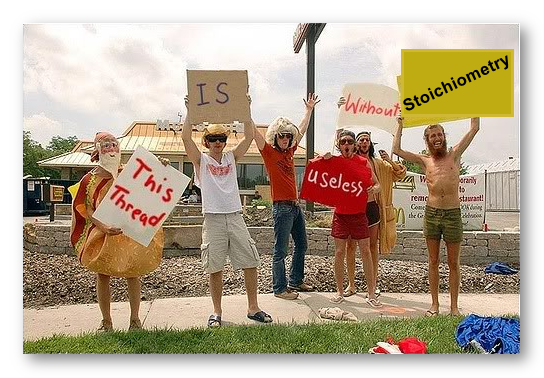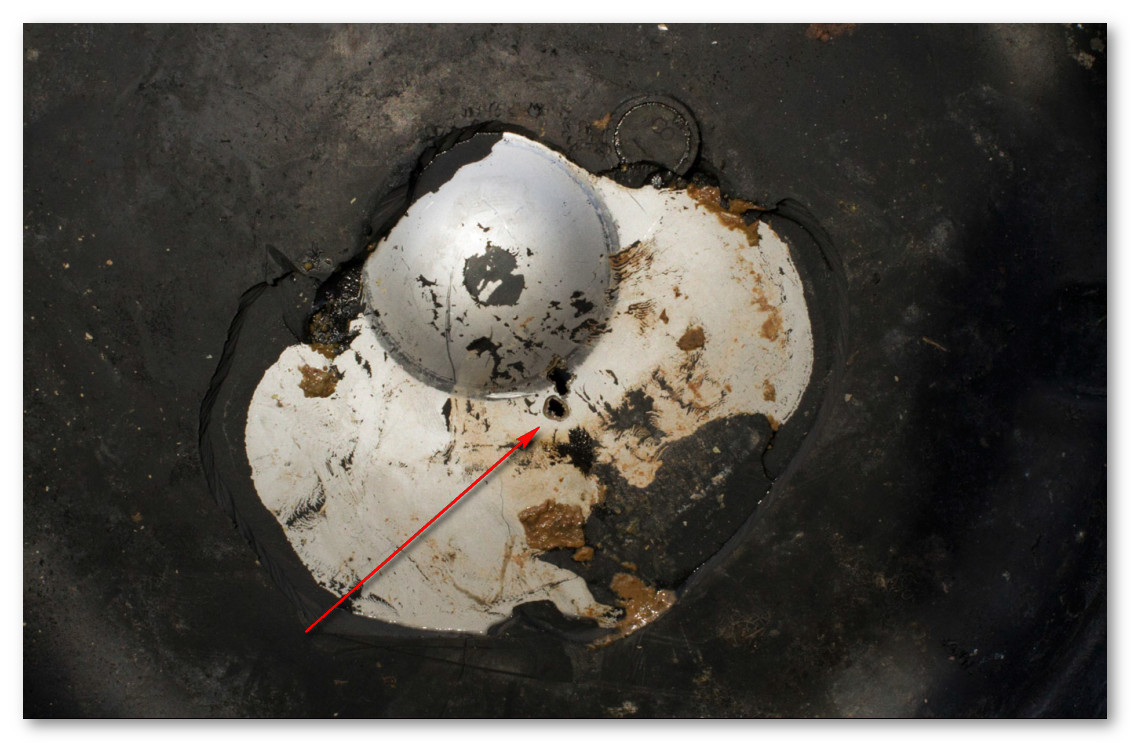bracconiere
Jolly Alcoholic - In Remembrance 2023
🗳 and i'm putting in a request for a brew kettle icon under smileys.......

I didn't know the moon was SS, I thought it was made of cheese.How many folks has he sent to the moon again?
An abbreviated version of our passivation process (based on the NASA studies):
-Make sure everything is completely, completely clean. Any soil or film will prevent effective passivation.
-Decide if you are going to recirculate your passivation solution or completely fill your vessels with the solution, but the key is to ensure that there are no dry spots.
-Use 4% citric acid on a weight basis (so 10 gallons of water = 83.3# water; you add 3.3# of citric acid).
-Heat the solution to 140 F and either soak or circulate. Do this for 30 - 60 minutes. (Don't go longer because there's actually a drop off in effectiveness with time.)
-Drain the solution completely and leave everything open to air dry. You are not done yet, though...
-Let the air-dried surfaces remain exposed to the air. 8 hours should be sufficient, but there's no time limit.
I'm attaching the slightly longer version, too. Hope that's helpful!
Rick
So, after 8 hours do you need to rinse, or scrub/clean?
Are folks in general passivating all stainless vessels, including hlt, mash? I have some rust spots inside a stainless pump head so I imagine recirculating acid through that is a good idea?
Any concern with citric acid on heating elements?










Rinse with water after draining the acid.So, after 8 hours do you need to rinse, or scrub/clean?
I just recently passivated everything (all stainless equipment that contacts the wort/beer/water) since I got a new kettle, new chiller, new pump, and new false bottom.... I love my new system.Are folks in general passivating all stainless vessels, including hlt, mash? I have some rust spots inside a stainless pump head so I imagine recirculating acid through that is a good idea?
Nope!Any concern with citric acid on heating elements?
- Passivation does not occur at room temperature.
- Air does not selectively remove iron from the surface of metal (i.e. passivation does not occur spontaneously).
- Lemon juice contains a lot of other substances that may interfere with the process.
The acid does not remove iron at room temperature.The acid (nitric or citric) removes the free iron from the surface. The chromium oxide then forms all by itself - this is the passivation - , as long as there is oxygen around. At room temperature.
The acid does not remove iron at room temperature.
Mhmm. ASTM A-967 7.1.1.3 seems to say otherwise.The acid does not remove iron at room temperature.

Very funny. I actually do have a few quart-size pots that I also clean and treat using this method. In any case, I'm not filling my stainless pots with acid, I just keep the surface wet. But as I said, there's nothing wrong with making your own acid if you need a lot.So you have like a 1 quart boil kettle?
I have 3 ten gallon kettles in my system.. how many lemons is that anyway?
Very funny. I actually do have a few quart-size pots that I also clean and treat using this method. In any case, I'm not filling my stainless pots with acid, I just keep the surface wet. But as I said, there's nothing wrong with making your own acid if you need a lot.
I didn't follow the oxalic acid (barkeepers friend) discussion in all detail, but I wanted to add that
a) oxalic acid works very well to electro-etch austenitic steels, to reveal the grain structure after polishing, and
b) oxalic acid is not (to the best of my knowledge) mentioned in the above standard on chemical passivation treatments for stainless steels. On the other hand, section 8.2 allows - if I read it correctly - any other treatment, as long as the parts meet the test requirements.
So, to slightly paraphrase Red Green, if it works, it's an accepted solution...
I base my suggestions on data. Take it or leave it.Mhmm. ASTM A-967 7.1.1.3 seems to say otherwise.
View attachment 683202
7.1.1.4 and 7.1.1.5 then allow other recipes as longs as the parts afterwards pass the test requirements, like dunking in water for an hour, drying for an hour, repeating twelve times, and showing no surface rust. Or keeping a wet cloth on the surface for at least an hour, and then letting the surface air dry, before inspecting for rust.
Ok thats cool.. but what is the resistance to using citric acid? Obviously its not the 'it's natural' argument if you have no troubles with the not natural oxalic acid in BKF. Secondly, electro etching would work with many different acids or even salt water as the electrolyte because that process is an electrochemical reaction which is a whole different deal then we are talking about here. And lastly.. one would think that if Red did specific testing on oxalic acid's ability to enrich the chromium on the surface of stainless that the ASTM would have heard about it by now. But hey you do whatever you think is best for the maintenance of your equipment.

"didn't your mole used to be on the other side?"Great conversation guys. I'm really enjoying it. Wish I understood chemistry better as these subjects usually leave me with more questions than answers. My thoughts:
- I think oxalic acid is very natural, at least as much as citric. Isolated directly from plants, same as citric.
- I would think that repassivation of chromium is a lot faster if a strong oxidizing acid is used. This conversation could benefit from discussion of redox equations and/or ORP values

- I wonder if something simple, like hydrogen peroxide, would accelerate the repassiviation of the chromium after an acid was used to remove free iron.
View attachment 683209
Bilsch, I have no resistance to using citric acid. I'm not harvesting clover to make my own cleaner...Ok thats cool.. but what is the resistance to using citric acid? Obviously its not the 'it's natural' argument if you have no troubles with the not natural oxalic acid in BKF. Secondly, electro etching would work with many different acids or even salt water as the electrolyte because that process is an electrochemical reaction which is a whole different deal then we are talking about here. And lastly.. one would think that if Red did specific testing on oxalic acid's ability to enrich the chromium on the surface of stainless that the ASTM would have heard about it by now. But hey you do whatever you think is best for the maintenance of your equipment.
RPH_Guy, I did not know that. Maybe newer versions of the ASTM standard take that into account; my quote is from the 2007 version.I base my suggestions on data. Take it or leave it.
See page 22 (Phase 1 conclusions):
https://ntrs.nasa.gov/archive/nasa/casi.ntrs.nasa.gov/20110001362.pdf
"several citric acid treatments especially those at room temperature, performed worse than no passivation treatment."
See page 63 for data.
We don't seem to have any chemists here, at least none that chose to reveal themselves, and metallurgists (like Palmer) are apparently not good enough... ;-) Brewers are a tough crowd.Great conversation guys. I'm really enjoying it. Wish I understood chemistry better as these subjects usually leave me with more questions than answers. My thoughts:
- I think oxalic acid is very natural, at least as much as citric. Isolated directly from plants, same as citric.
- I would think that repassivation of chromium is a lot faster if a strong oxidizing acid is used. This conversation could benefit from discussion of redox equations and/or ORP values

- I wonder if something simple, like hydrogen peroxide, would accelerate the repassiviation of the chromium after an acid was used to remove free iron.
View attachment 683209
We don't seem to have any chemists here, at least none that chose to reveal themselves, and metallurgists (like Palmer) are apparently not good enough... ;-) Brewers are a tough crowd.




Surface wear due to cleaning and disassembling/reassembling of various parts would be my first guess. Although if you only CIP (either with a spray ball or a full soak) and never disassemble anything (not a good idea unless you're 100% sure that dirt cannot collect anywhere no matter what) I suppose you could go decades without further treatment.My curiosity lies in this: If you are not using heat, ie: using a vessel for fermenting, what would cause iron to make it back to the surface?
Surface wear due to cleaning and disassembling/reassembling of various parts would be my first guess. Although if you only CIP (either with a spray ball or a full soak) and never disassemble anything (not a good idea unless you're 100% sure that dirt cannot collect anywhere no matter what) I suppose you could go decades without further treatment.

I don't know of any published scientific evidence to answer these questions. I've heard "expert" opinions range from the oxide layer forming instantaneously upon air exposure to several weeks.
- I would think that repassivation of chromium is a lot faster if a strong oxidizing acid is used. This conversation could benefit from discussion of redox equations and/or ORP values
- I wonder if something simple, like hydrogen peroxide, would accelerate the repassiviation of the chromium after an acid was used to remove free iron.
Theoretically, chloride (present in wort/beer) or chlorine compounds (often present in tap water) can damage the passivation layer, as can some cleaning compounds. Furthermore any mechanical scrubbing, scrapes, or scratches can possibly expose surface iron. I know off hand that there are in fact published studies that show that the presence of stainless steel can affect H2S production during fermentation, which proves that the oxide layer can be penetrated under normal circumstances and therefore passivation can have an positive impact.If you are not using heat, ie: using a vessel for fermenting, what would cause iron to make it back to the surface?
Theoretically, chloride (present in wort/beer) or chlorine compounds (often present in tap water) can damage the passivation layer.
